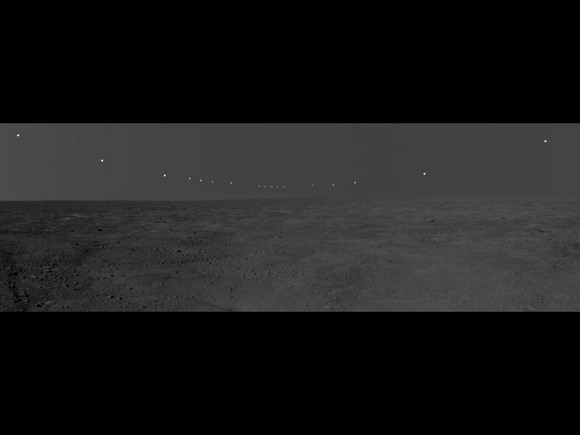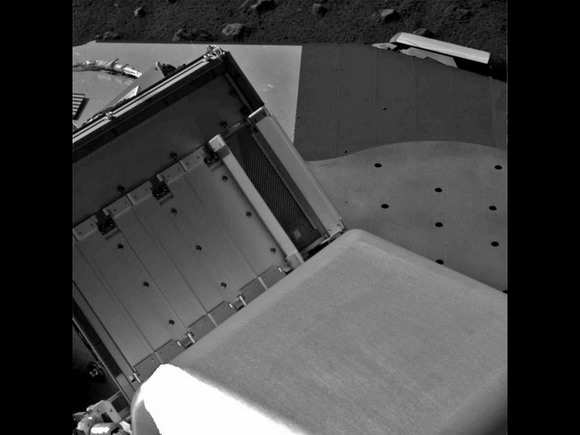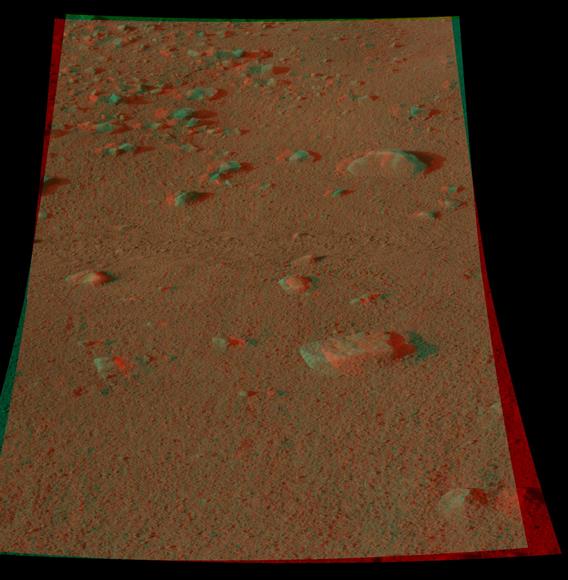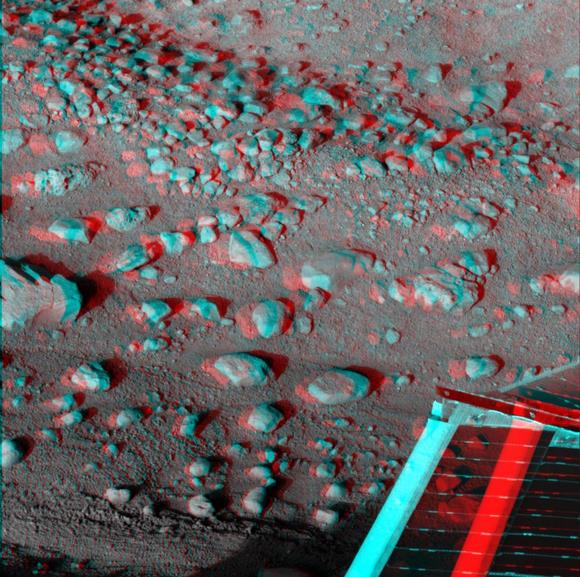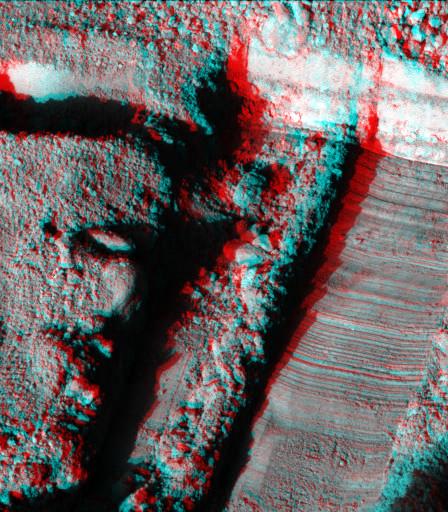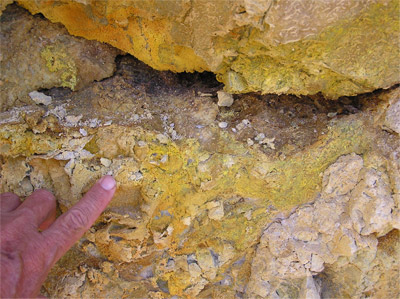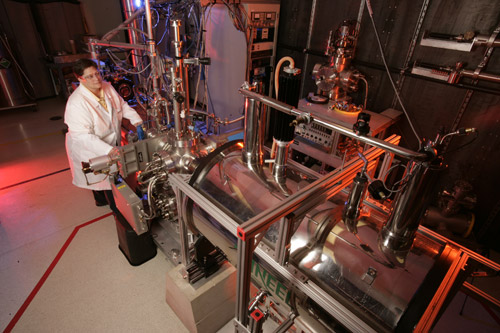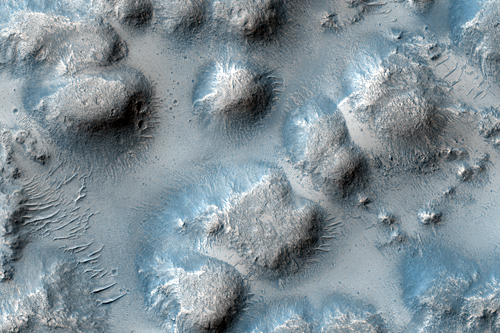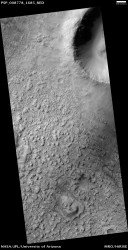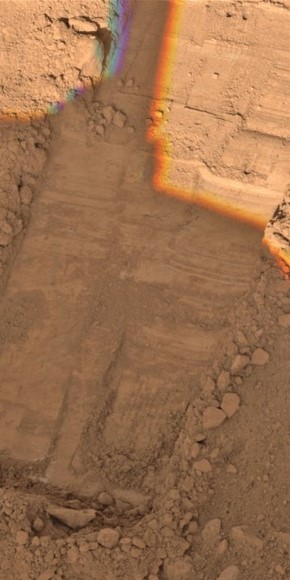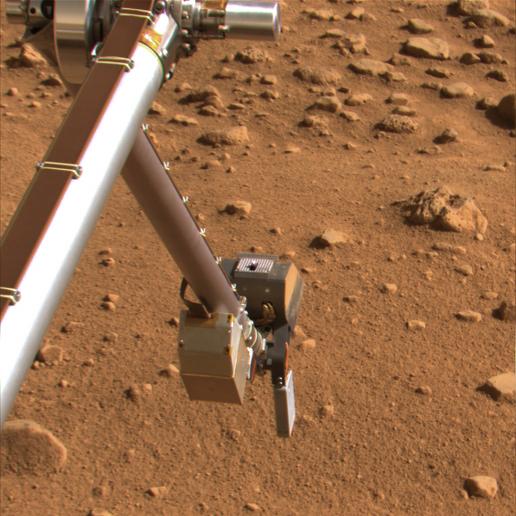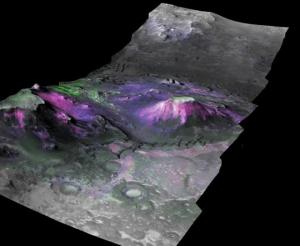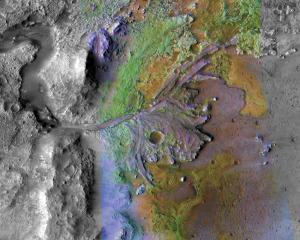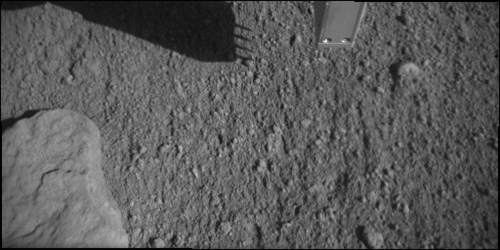[/caption]
This panorama mosaic of images was taken by the Surface Stereo Imager on board NASA’s Phoenix Mars Lander. This mosaic documents the midnight sun during several days of the mission, from Sol 46, or the 46th day of the mission to Sol 56 (that would be to July 12 – 22, 2008 here on Earth.) The foreground and sky images were taken on Sol 54, when the lander pulled an all-nighter to coordinate work with the Mars Reconnaissance Orbiter. The solar images were taken between 10 p.m. and 2 a.m., local solar time, on the different nights of the 11 sol period. During this period, the sun’s path got slightly lower over the northern horizon, causing the lack of smoothness to the curve. This pan captures the polar nature of the Phoenix mission in its similarity to time lapse pictures taken above the Arctic Circle on Earth.
The latest activities of the lander has brought it closer to analyzing a sample of icy soil in the TEGA oven.
On Tuesday and Wednesday, Phoenix used its robotic arm to scrape the top of the hard layer in the trench called “Snow White.”
“We are monitoring changes between the scrapes,” said Doug Ming of NASA Johnson Space Center. “It appears that there is fairly rapid sublimation of some of the ice after scraping exposes fresh material, leaving a thin layer of soil particles that had been mixed with the ice. There’s a color change from darker to bluer to redder. We want to characterize that on Sol 58 to know what to expect when we scrape just before collecting the next sample.”
The science team is preparing to quickly collect a sample from the hard layer of Snow White and deliver it to one of the eight ovens of Phoenix’s Thermal and Evolved-Gas Analyzer (TEGA). Doors to the oven have been opened to receive the sample. TEGA will “bake and sniff” the samples to analyze the composition of the soil and ice.
On Wednesday the team also checked out the heater on TEGA is working properly, to verify that pressure sensors can be warmed enough to operate properly early in the Mars morning.
“For the next sample, we will be operating the instrument earlier in the morning than we have before,” said William Boynton of the University of Arizona, lead scientist for TEGA. “It will be almost the coldest part of the day, because we want to collect the sample cold and deliver it cold.”
On the day when Phoenix will deliver the next sample to TEGA, the team plans to have lander activities begin about three hours earlier than the usual start time of about 9 a.m. local solar time.
On Thursday, one set of imaging commands will check a northwestern portion of the horizon repeatedly during early afternoon to see whether any dust devils can be seen. This will be the first systematic check by Phoenix for dust devils. The Mars Rover Spirit was able to image sequences of dust devils in its location, south of Mars’ equator.
Original News Source: Phoenix News

